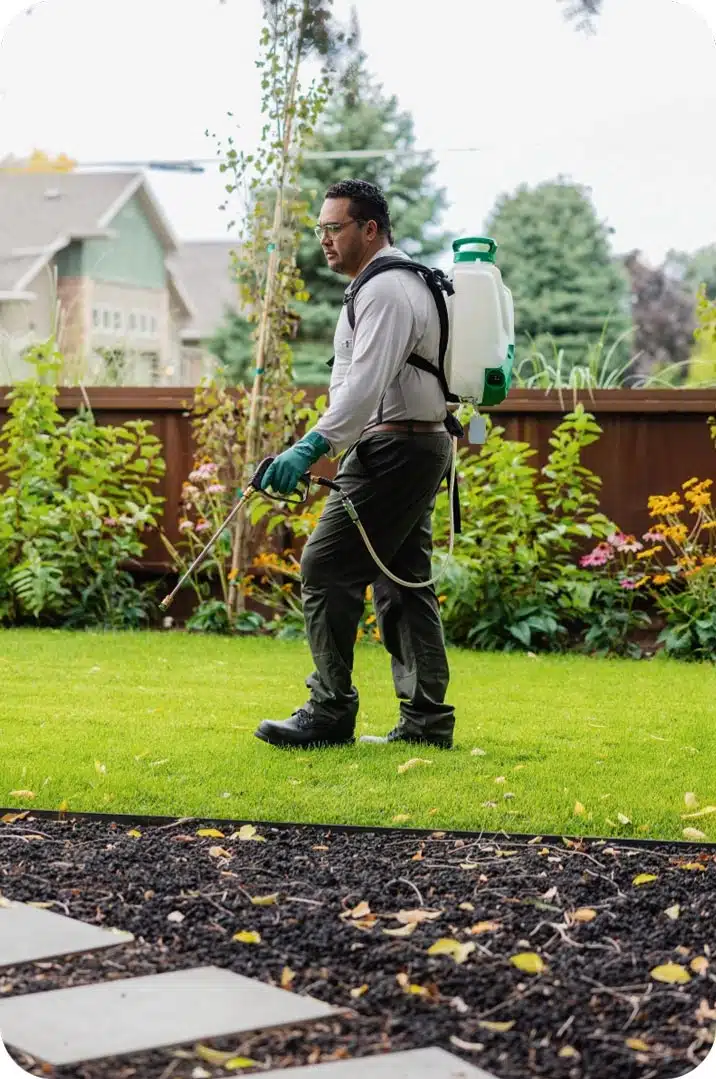A1 Charlotte Pest Control Companies - Your Regional Pest Professionals
A1 Charlotte Pest Control Companies - Your Regional Pest Professionals
Blog Article
Bed Insect Treatment Breakdown: Comparing Chemical Vs. Non-Chemical Solutions
In the realm of parasite control, particularly when handling the relentless problem of bed pests, the selection in between chemical and non-chemical treatment solutions can be a crucial one. Both approaches provide unique advantages and drawbacks, influencing variables such as efficiency, security factors to consider, and general cost. By analyzing the nuanced details of each technique, a clearer understanding of which path to pursue in attending to a bed pest invasion can be obtained.
Effectiveness of Chemical Therapies
Chemical treatments for bed pest invasions have actually been extensively identified for their powerful and quick effectiveness in removing these pests. When taking into consideration the efficiency of chemical treatments, it is critical to recognize that they can offer a comprehensive and quick remedy to a bed insect trouble. Expert pest control specialists frequently count on pesticides to target bed bugs at numerous stages of their life process, including grownups, eggs, and fairies. These chemicals typically work by interrupting the bed bugs' nerve system, leading to paralysis and ultimate fatality.
In addition, chemical treatments have the benefit of providing recurring effects, implying that they can remain to remove bed pests even after the initial application. This residual action is particularly useful in combating any kind of possible re-infestations. In addition, the fast activity of chemical treatments can bring alleviation to people dealing with serious bed pest problems, permitting them to reclaim control of their home promptly.
Safety And Security Problems With Chemical Solutions
One vital aspect that needs mindful consideration when making use of chemical remedies for bed pest therapy is making certain the safety and security of occupants and the setting. Direct exposure to specific chemicals used in bed pest treatments can lead to breathing issues, skin inflammation, or other unfavorable responses, specifically in individuals with pre-existing problems or level of sensitivities.
Furthermore, the environmental impact of chemical solutions is one more significant factor to consider. Some pesticides utilized in bed insect therapies might be damaging to valuable bugs, wildlife, and ecosystems if they seep right into the dirt or water systems. It is vital to utilize chemical therapies sensibly, following safety and security standards, and considering much less harmful alternatives to alleviate these risks and make certain the safe and effective monitoring of bed insect invasions.
Benefits of Non-Chemical Methods
Taking into consideration the prospective safety problems and environmental effect connected with chemical solutions for bed bug treatment, exploring non-chemical techniques provides an appealing option with numerous distinctive benefits. Non-chemical techniques offer a safer alternative for houses, particularly those with pet dogs, children, or people conscious harsh chemicals. These strategies eliminate the dangers of direct exposure to toxic materials, minimizing the possibility for adverse health results. Furthermore, non-chemical treatments are eco friendly, as they do not add to air or water pollution, making them a sustainable choice for insect control.
Furthermore, non-chemical remedies can be effective in targeting bed pests, including hard-to-reach locations where chemical treatments may not penetrate - A1 charlotte pest control companies. Techniques such as warmth therapy, vacuuming, vapor cleaning, and bed mattress encasements provide detailed obliteration without the usage of hazardous chemicals.
Limitations of Non-Chemical Treatments

Additionally, non-chemical therapies typically need numerous applications to accomplish effective obliteration. This can be lengthy and may not constantly guarantee complete elimination of all bed pests and their eggs, especially in hard-to-reach or concealed areas.
Furthermore, the success of non-chemical therapies greatly depends on appropriate application and thoroughness, which can be challenging for individuals without expert experience. Insufficient application of non-chemical approaches might lead to incomplete elimination, causing relentless infestations and the requirement for additional therapies.
For that reason, while non-chemical treatments have their advantages, it is important to recognize these restrictions and consider them when determining one of the most effective strategy for taking care of bed pest invasions.
Price Contrast: Chemical Vs. Non-Chemical Options
Given the constraints related to non-chemical therapies, a crucial element to examine in the context of bed insect monitoring is the price contrast between chemical and non-chemical choices. Chemical treatments usually involve the application of pesticides by professionals, which can vary from $250 to $900 per space, depending upon the seriousness of the problem and the dimension of the location to be treated. On the other hand, non-chemical therapies like warmth therapy or heavy steam can be much more costly, with costs ranging from $1,000 to $6,000 for a whole home. While the preliminary cost of chemical therapies may seem reduced, numerous treatments might be required to completely eradicate the problem, possibly raising the overall expense. On the other hand, non-chemical alternatives might give a more lasting and green solution, although they can be cost-prohibitive for some individuals. Inevitably, read this post here when considering the cost of bed pest therapy choices, it is essential to evaluate the in advance expenditures versus the efficiency and long-term sustainability of the picked approach.
Final Thought

Thinking about the prospective safety and security problems and ecological influence linked with chemical remedies for bed bug treatment, discovering non-chemical strategies offers an appealing choice with several distinct advantages.Provided the constraints associated with non-chemical therapies, an essential facet to review in the context of bed pest administration is the expense contrast in between chemical and non-chemical options. In comparison, non-chemical treatments like warm therapy or vapor can be a lot more costly, with prices varying from $1,000 to $6,000 for an entire home. While the initial cost of chemical treatments may appear lower, numerous treatments may be needed to completely get rid of the infestation, possibly boosting the total expense.In conclusion, when contrasting chemical and non-chemical bed pest therapy alternatives, it is crucial to think about performance, security, advantages, limitations, and expense.
Report this page